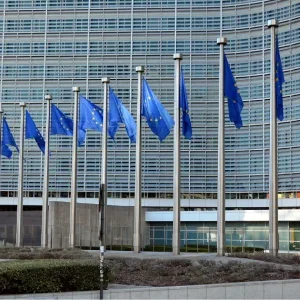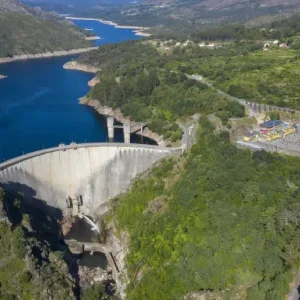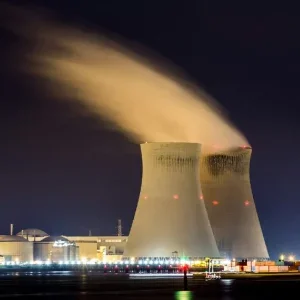Profound changes are sweeping the electricity industry worldwide; changes which Canadian utility Hydro-Québec is not just aware of, but wants to use to its advantage.
In 1996, after a lengthy public debate on energy, the Québec government issued a new power policy which aims to ‘put energy to work’ for its people, respect sustainable development and embrace the changes currently taking place in the North American electricity industry. Central to this policy is the government-owned utility, Hydro-Québec, which was instructed to act on the following conditions: •Hydro-Québec shall improve its profit margin and provide a greater return to its shareholder.
•The utility shall become the cornerstone of an industrial strategy aimed at making Québec a major energy hub.
•It shall pursue R&D efforts and emphasise the commercial potential of its projects.
•It shall forge a new economic partnership with aboriginal nations, with a view to developing northern Québec’s energy resources.
•Hydro-Québec shall remain the exclusive property of the Québec government.
Taking these points into consideration, and confident of the competitiveness and stability of its hydroelectric facilities, Hydro-Québec is determined to become a driving force in Québec’s economic development. Describing itself as a ‘business first’ company, the utility announced its corporate direction for the next five years in the form of a report called the Strategic plan 1998-2002, which was launched in November 1997. ‘The plan focuses on the growth and profitability strategies that will pave the way for Hydro-Québec to achieve significant gains and greater profitability,’ André Caillé, the utility’s president and chief executive officer, said.
Ultimately, it is anticipated that Hydro-Québec’s net income will jump from C$760M in 1997 to C$1850M in 2002. This will be attributed primarily to higher sales inside and outside Québec, but the question is: how can a utility confidently predict such a growth in sales? An explanation for this can be found in the five main goals which form the basis of the utility’s strategic plan. These are regarded as indivisible: none can be achieved in isolation.
Rates and service quality In an attempt to ‘nurture the trust’ that Quebecers place in Hydro-Québec (it produces or purchases more than 97% of electricity consumed in the province), the utility announced that rates will be frozen for a period ending April 2002, after an inflationary adjustment on 1 May 1998. As the strategic report states: ‘This orientation reiterates Québec’s social pact regarding electricity, based on the benefits flowing from the nationalisation of electricity. It is anticipated that such a freeze will stimulate investment in Québec and thus support the utility’s sales forecasts for the next few years.’ When asked how Hydro-Québec can afford to freeze electricity rates, spokesperson Slyvie Tremblay said it is due to the inexpensive nature of hydroelectric generation. ‘Electricity prices in Québec, as in other parts of the continent where hydroelectricity predominates, are among the lowest in North America,’ she said.
Respectable profitability By 2002 Hydro-Québec says its annual sales will total 70.5TWh, up 10TWh from 1997. The increase will stem from the general increase in industrial activity and from the penetration of high performance electrotechnologies in industrial enterprises.
An increase of 4.7% will also be achieved from the annual sales to small- and medium-sized power users (residential, farming, commercial and institutional sectors). To accomplish this the utility will implement marketing programmes, targeting the most profitable market segments.
Furthermore, Hydro-Québec wants to develop markets outside Québec to complement its domestic counterparts. By 2002 it is anticipated that such annual sales will total 40% more than they did in 1997, and will be driven by direct sales to wholesale market customers and industrial customers outside the province, along with the penetration of retail market segments as they become accessible.
With the restructuring of the electricity market in the US, and Hydro-Québec’s cheap hydro power, this should put the company in a strong position to sell power to the US and thus increase sales. Tremblay would not commit herself but added: ‘The opening of the retail market in the US means that consumers will eventually be able to choose the electricity supplier who will offer the lowest possible price.’ To achieve such growth and profitability through new sales, the utility requires additional generation and supplies at competitive terms — this is where hydro power comes into the picture.
Proud of its hydroelectric achievements over the past 30 years, Hydro-Québec wants to maintain its position as one of the most competitive hydro power utilities on the North American continent. As part of its long term outlook, it wants to build a portfolio of new projects. To go ahead, these projects must meet three conditions: •They must be profitable.
•They must be environmentally acceptable.
•They must be well received by local communities.
This can be achieved through the development of partial river diversion projects in the south and north of the province, which will increase the runoff of a river basin that has already been developed for hydroelectric purposes. Diversion projects currently under study are shown in the table.
By the year 2002, the utility anticipates it will have an additional generating capacity of 8TWh from hydro power. Completion of the Sainte-Marguerite 3 hydro station will achieve an energy gain of 2.7TWh (guaranteed 2.36TWh) while, along with other hydro projects which cannot be disclosed at the present time, the river diversions will achieve an additional 6TWh of energy.
Hydro-Québec is quick to point out that partial river diversions maintain an environmentally acceptable controlled flow of water in the original river bed. In acknowledgment of the importance of environmental concerns and the views of local communities who may be affected by hydro projects, the utility states that ‘acceptance by local communities is one of the essential conditions for completing the development of hydroelectric potential envisaged by the company.’ Hydro-Québec wants to establish a new partnership with local communities (including native people). It will continue to consult with host communities in relation to future projects and all environmental mitigative measures will be carried out with their involvement. Furthermore, it is proposing that local communities participate directly in the investment and realisation of projects — the utility will invite them to invest in their local projects as partners.
‘The company has always been able to contribute to the development of the Québec economy and ensure economic spinoffs locally,’ Tremblay explained. ‘Developing a partnership with local communities is another way for us to contribute to economic development in various regions of the province. The local communities are also interested by the partnership proposal,’ she added.
Tremblay went on to point out that there is a strong economic incentive for local communities to invest in such hydro projects. ‘It is interesting for the local communities as they know that future projects will only be undertaken if they will be profitable. Indeed, the profits generated by the partnership will be shared among all partners in proportion to their respective share of the capital.’ Hydro-Québec knows that to achieve such a growth in profits it has to have the environment on its side. The company is more than aware that its profitability ‘hinges on a better understanding, both inside and outside Québec, of hydro power’s largely positive environmental record’. It wants to communicate the advantages of hydroelectricity as a ‘green’ and non-polluting source of energy and will step up its lobbying efforts with national and international organisations. (The utility has already been working with an environmental research group and the International Atomic Energy Agency to show how favourable hydro is as a source of energy when discussing greenhouse gas emissions.) World class activity base High on its list of priorities, Hydro-Québec is keen to invest in foreign markets as an industrial partner, through its subsidiary company Hydro-Québec International. With an investment of C$1.2B designated for international markets over the next five years, the utility expects a return on equity of 12%.
‘Hydro-Québec just wants to be active on the international market like other utilities around the world,’ Tremblay explained. ‘We have well-known expertise in hydro power, engineering, and the development and construction of transmission lines, and can be very competitive on the international market.’ The company wants particularly to develop projects in China, South America, Southeast Asia and Eastern Europe – taking full advantage of the world energy demand which is expected to show strong growth over the next ten years.
Recent activities by Hydro-Québec International include the signing of a Memorandum of Understanding with the China International Water and Electricity Corporation in November 1997. This joint venture will build and operate a 200MW hydro power station on the Hingjiang river in the southwestern Hunan province of China. Another venture, which was announced in February, is with the Peruvian National Electricity Transmission Company and Peruvian entrepreneur Grana Y Mointero, and will involve the construction and operation of an interconnection line in Peru.
Employees To ensure that all employees contribute to the company’s development, Hydro-Québec is forging ahead with its management skills and promoting values such as customer satisfaction, respect for employees and quality improvements. The company says that it appreciated the central role played by its employees in Hydro-Québec’s past, present and future successes.
Research and development Well aware that research and development (R&D) is the springboard for future growth and profitability, Hydro-Québec will earmark C$20M each year for this purpose. At its research institute it will focus its R&D work on: •Reducing maintenance costs and increasing the availability of facilities.
•Reducing the environmental impact of facilities.
•Developing tools for managing distribution systems and reservoirs.
•Developing high performance electro-technologies.
The company acknowledges that it can only maintain its world ranking in hydroelectric generation and transmission by developing new technologies.
Hydro-Québec is keen to build on its achievements to date and is convinced that its strategic plan will lead to sustained growth, profitability and continuity. The company’s consolidated net income is expected to reach C$1.85B in 2002, for a return on equity of 11.8%, while in 1998-2002 investments will exceed C$13B.
‘As the world markets open up,’ André Caillé says, ‘Hydro-Québec is fully aware of the role it plays in the Québec economy, and of its social and environmental responsibilities as a ‘business first’ publicly-owned company.’
Related ArticlesSpotlight on… Canada
| Planned partial river diversions |
| River to be diverted Destination reservoir Net energy gain Portneuf Pipmuacan 306GWh Sault aux Cochins Pipmuacan 178GWh Boucher Outardes 3 204GWh Manouane Pipmuacan 429GWh |






